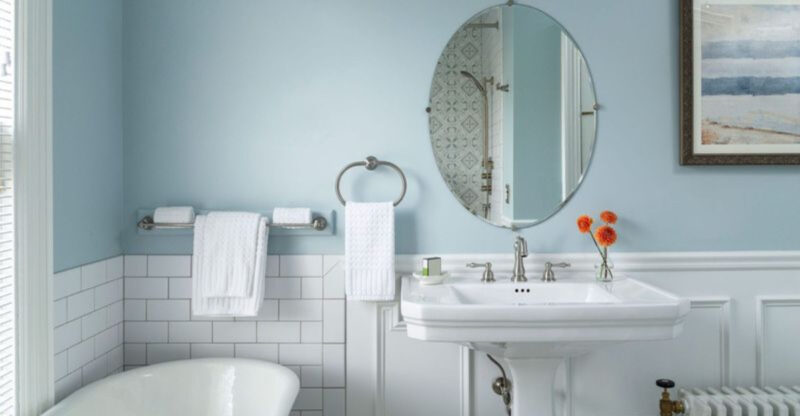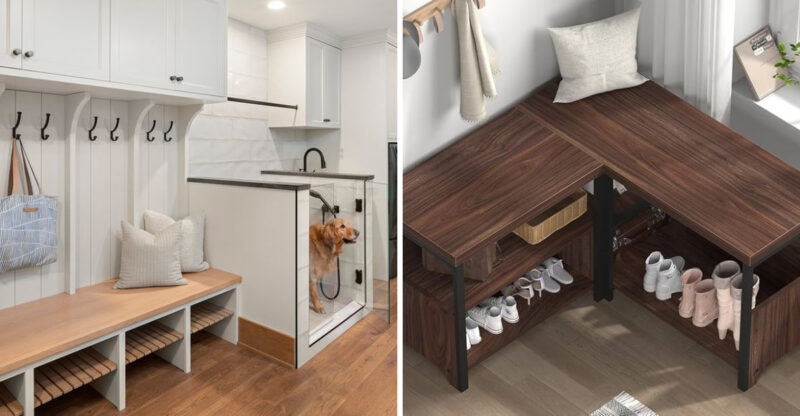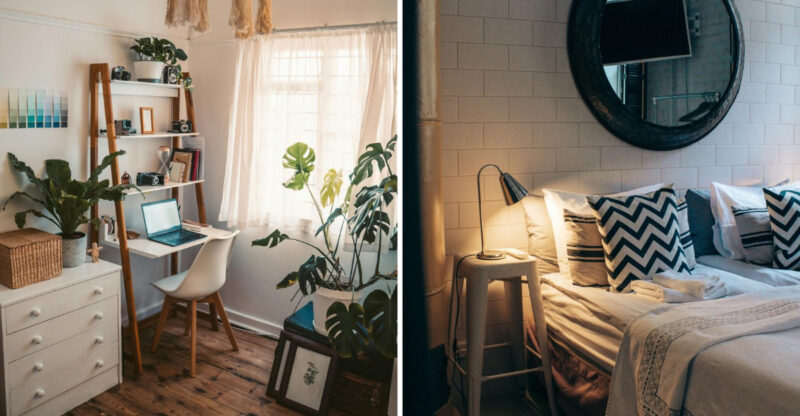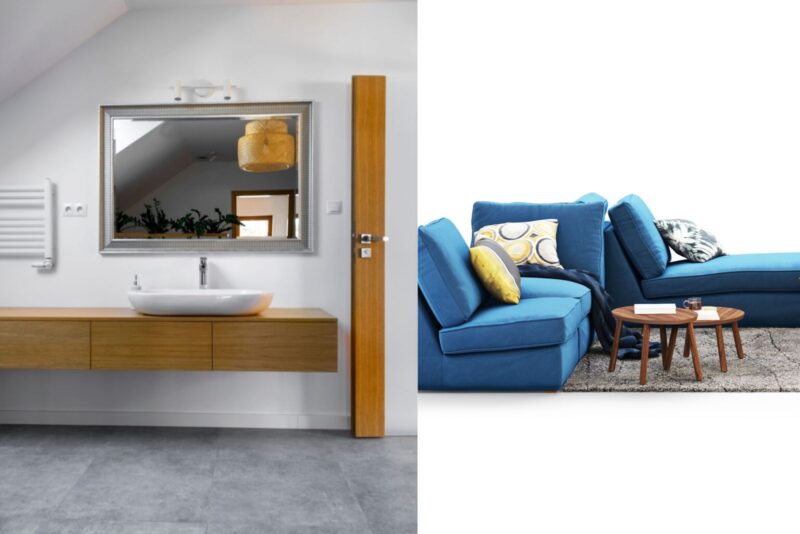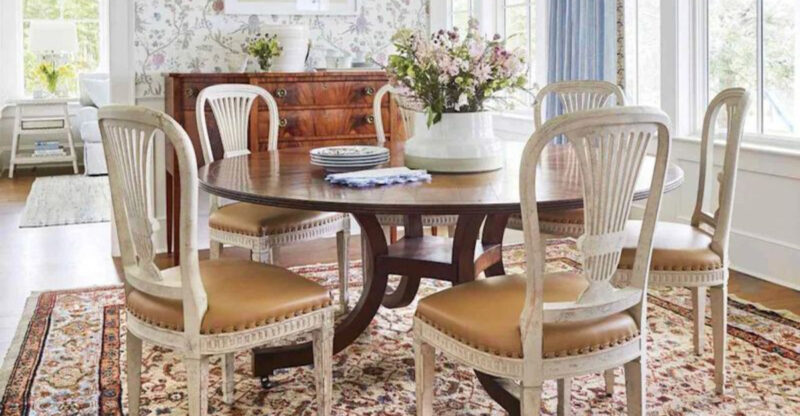13 Costly Bathroom Design Mistakes Pennsylvania Homeowners Wish They Could Undo
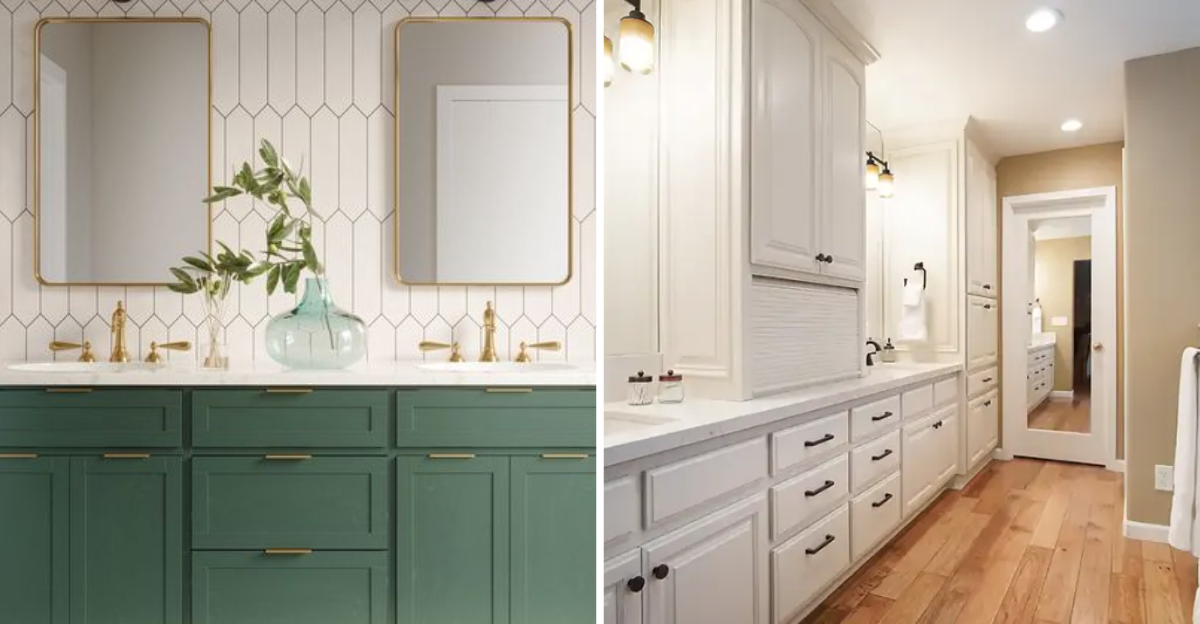
Renovating your bathroom can be exciting, but it’s also easy to make expensive mistakes that haunt you for years. Pennsylvania homeowners know this all too well, having learned hard lessons from design choices that seemed smart at the time.
From poor ventilation to trendy tiles that quickly feel dated, these missteps cost money, time, and peace of mind. I’m sharing the top 13 bathroom blunders so you can avoid them and create a space you’ll truly love.
1. Skipping Proper Ventilation
When you skip installing a quality exhaust fan, you’re basically inviting mold and mildew to move in permanently. Pennsylvania’s humid summers make this problem even worse, turning your beautiful bathroom into a breeding ground for unhealthy spores. I’ve seen gorgeous tile work ruined within months because homeowners didn’t prioritize airflow.
Your mirror stays fogged up longer, paint peels faster, and that musty smell never really goes away. Installing a proper ventilation system might cost a few hundred dollars upfront, but replacing moldy drywall and retiling costs thousands. It’s one of those invisible upgrades that protects everything else you’ve invested in.
If you’re remodeling, choose a fan rated for your bathroom’s square footage and make sure it vents outside, not into your attic.
2. Choosing Trendy Tile That Dates Quickly
Did you know that the hottest tile trend today could make your bathroom look embarrassingly outdated in just five years? I’ve watched homeowners pour thousands into intricate geometric patterns or bold color schemes, only to regret them almost immediately. What looks cutting-edge in a magazine can feel tired and tacky surprisingly fast.
Classic subway tiles, neutral stone, or simple hexagons stand the test of time much better than flash-in-the-pan designs. If you love bold patterns, consider using them as small accents rather than covering entire walls. That way, you can swap them out easily without a full renovation.
Your bathroom should feel fresh for at least a decade, not like a time capsule from 2019.
3. Installing Inadequate Lighting
How frustrating is it to apply makeup or shave in a bathroom where you can barely see your own face clearly? Single overhead lights create harsh shadows that make everyday grooming tasks unnecessarily difficult. I can’t tell you how many homeowners have complained about this after their renovation was complete.
Layered lighting makes all the difference think vanity lights at eye level, recessed ceiling lights, and maybe even a decorative fixture for ambiance. Pennsylvania bathrooms often lack natural light, especially in older homes, so artificial lighting becomes even more critical. Dimmers let you adjust brightness for relaxing baths versus morning routines.
Planning your lighting layout early prevents expensive rewiring later when you realize one fixture just isn’t cutting it.
4. Neglecting Storage Space
It’s amazing how quickly bathroom counters disappear under piles of products, towels, and toiletries when you don’t plan enough storage. Beautiful floating vanities look sleek in photos, but they offer almost nowhere to stash your stuff. I’ve seen homeowners end up with baskets scattered everywhere, ruining the clean aesthetic they paid good money to create.
Built-in cabinets, recessed shelving, and medicine cabinets keep things organized and surfaces clear. Think about what you actually need to store cleaning supplies, extra toilet paper, hair tools, medications, and linens all need homes. Pennsylvania winters mean you’ll probably have extra towels and robes taking up space too.
Measure twice and plan storage that works for your household’s real needs.
5. Picking the Wrong Flooring
Are you thinking about installing hardwood or laminate in your bathroom because it looks warm and inviting? Stop right there, because water and these materials do not mix well. Pennsylvania’s freeze-thaw cycles and humidity swings make moisture problems even worse, causing warping, buckling, and expensive replacements.
Porcelain or ceramic tile, luxury vinyl, and natural stone are all water-resistant options that actually belong in bathrooms. They handle splashes, humidity, and wet feet without falling apart. If you want warmth underfoot, consider radiant floor heating under tile instead of choosing inappropriate materials.
Your flooring takes more abuse in the bathroom than almost anywhere else, so durability and water resistance should top your priority list when making this decision.
6. Ignoring Proper Waterproofing
Though waterproofing happens behind the scenes where you’ll never see it, skipping this step causes catastrophic damage down the road. I’m talking about rotted studs, ruined subfloors, and mold growing inside your walls where you can’t even see it spreading. Pennsylvania homeowners have paid tens of thousands to fix structural damage from inadequate waterproofing.
Proper waterproof membranes, cement backer board, and correctly sealed seams protect your investment for decades. This is especially critical in shower areas, around tubs, and anywhere water regularly touches walls or floors. Hire experienced contractors who understand building codes and best practices for wet areas.
Cutting corners here to save a few hundred dollars can literally cost you your entire bathroom and more later.
7. Choosing Form Over Function
If that stunning vessel sink splashes water all over your counter every single time you wash your hands, is it really worth it? I’ve watched homeowners fall in love with gorgeous fixtures that turn out to be nightmares in daily use. Rainfall showerheads that don’t rinse shampoo properly and freestanding tubs too small to actually soak in are common regrets.
Your bathroom needs to work for your real life, not just look pretty in photos. Test faucets for comfortable reach, check toilet heights for your family members, and consider whether that glass shower door will drive you crazy when you’re constantly squeegee-ing it. Pennsylvania families need practical spaces that handle busy mornings and rushed evenings.
Beauty matters, but functionality should always come first in hardworking spaces like bathrooms.
8. Underestimating Budget and Timeline
When homeowners tell me they budgeted exactly what their contractor quoted with no buffer, I already know they’re headed for trouble. Bathroom renovations almost always uncover surprise problems old plumbing that needs replacing, hidden water damage, or outdated electrical that doesn’t meet current codes. Pennsylvania’s older homes especially tend to hide issues behind walls.
Smart homeowners add at least 20% to their budget for unexpected costs and understand that projects usually take longer than promised. Tile deliveries get delayed, custom vanities take extra weeks, and finding matching fixtures can become surprisingly difficult. Rushing decisions because you’re over budget leads to regrets.
Plan realistically from the start so you can make good choices even when surprises pop up during construction.
9. Forgetting About Resale Value
Are you planning to install that jet-black bathtub and hot-pink accent wall because they express your unique personality? Just remember that future buyers might not share your bold taste, and you could struggle to recoup your renovation costs. I’m not saying you should design for strangers, but extreme choices can hurt resale value.
Pennsylvania’s real estate market values updated bathrooms highly, but only when they appeal to broad audiences. Neutral palettes with personality added through easily changed elements like towels, art, and accessories give you flexibility. Walk-in showers, double vanities, and quality materials almost always pay off when selling.
Balance your personal style with timeless design choices that won’t scare away potential buyers if you move within a decade or so.
10. Placing Electrical Outlets Poorly
It’s maddening to finish your beautiful bathroom renovation only to realize you have nowhere convenient to plug in your hair dryer or electric toothbrush. I’ve seen homeowners resort to ugly extension cords or give up and use outlets in other rooms. Outlets placed too far from mirrors or hidden behind toilets create daily frustration.
Modern bathrooms need outlets on both sides of double vanities, near mirrors at comfortable heights, and possibly inside cabinets for charging devices. Ground Fault Circuit Interrupter (GFCI) outlets are required by code near water sources for safety. Pennsylvania electrical codes are strict, so hire licensed electricians who know current requirements.
Think through your actual routine and where you’ll need power before walls get closed up for good.
11. Selecting the Wrong Vanity Size
When that gorgeous double vanity you ordered arrives and barely fits in your bathroom, leaving no room to move comfortably, you’ll understand why sizing matters so much. I’ve watched Pennsylvania homeowners sacrifice function for looks, cramming in vanities that block doors or leave no walking space. Conversely, tiny vanities in spacious bathrooms look ridiculous and waste valuable storage.
Measure your bathroom carefully, leaving at least 30 inches of clearance in front of the vanity and space for doors to swing open fully. Consider who uses the bathroom kids need different heights than adults, and couples appreciate double sinks when space allows. Custom vanities cost more but fit perfectly.
Your vanity should complement your bathroom’s size, not fight against it or dominate the entire room awkwardly.
12. Using Low-Quality Materials
Did you grab those bargain fixtures at the big-box store thinking you’d save money? Within months, finishes start corroding, cheap faucets leak, and discount tile grout cracks and stains. I’ve seen homeowners spend twice replacing failed materials when buying quality upfront would have cost less overall.
Bathrooms endure constant moisture, temperature changes, and heavy use—Pennsylvania’s hard water makes this even tougher on fixtures and surfaces. Quality faucets, durable tile, solid vanities, and proper waterproof materials last decades with minimal maintenance. Check warranties and read reviews before purchasing anything that touches water regularly.
Your bathroom renovation represents a major investment, so protect it by choosing materials built to withstand years of daily use and moisture exposure.
13. Forgetting Accessibility and Aging-in-Place Features
Though you might feel perfectly capable climbing in and out of that deep soaking tub today, will it work for you in twenty years? Pennsylvania homeowners increasingly regret not planning for future mobility needs, ending up with costly second renovations. Curbless showers, grab bars, and comfort-height toilets aren’t just for elderly people injuries and temporary limitations happen to everyone.
Installing blocking behind walls during construction costs almost nothing but allows grab bars to be added securely later. Wider doorways, non-slip flooring, and handheld showerheads make bathrooms safer and more comfortable for all ages. These features actually increase resale value as buyers recognize their long-term practicality.
Building in flexibility now means your bathroom adapts to changing needs instead of becoming a barrier as life circumstances shift over time.

